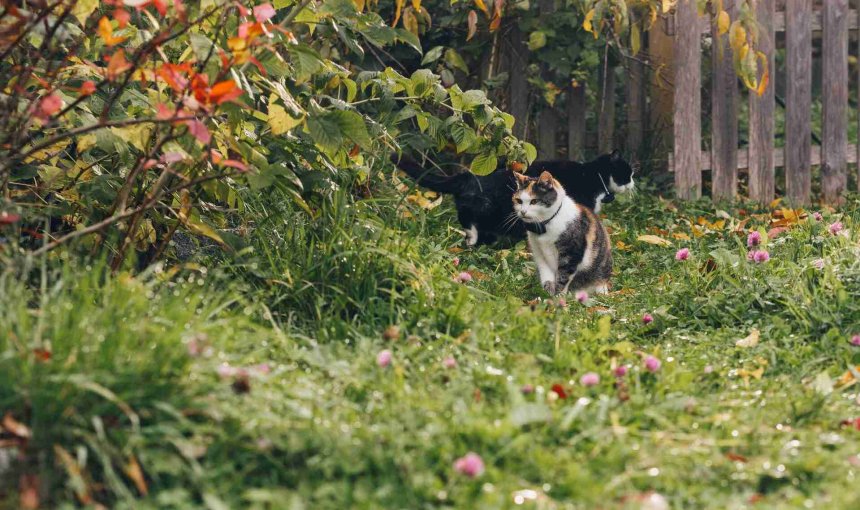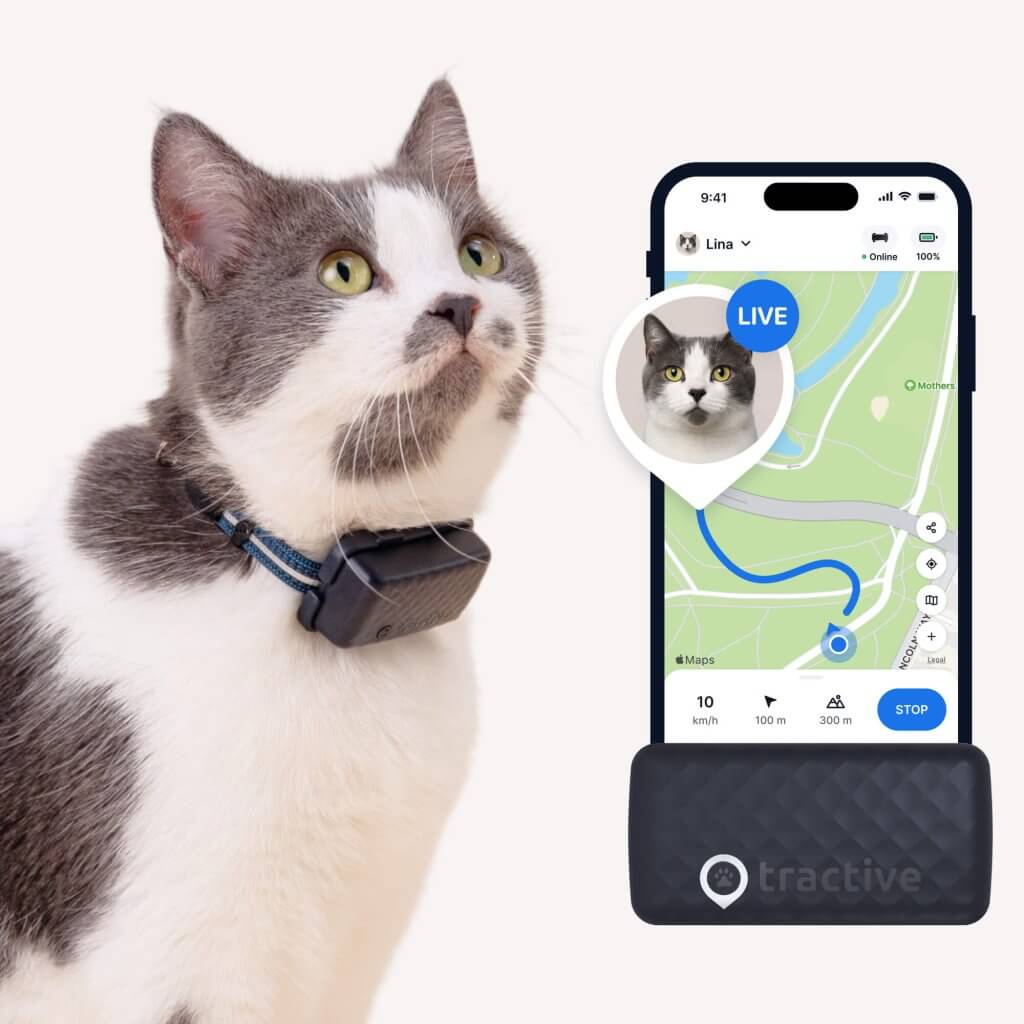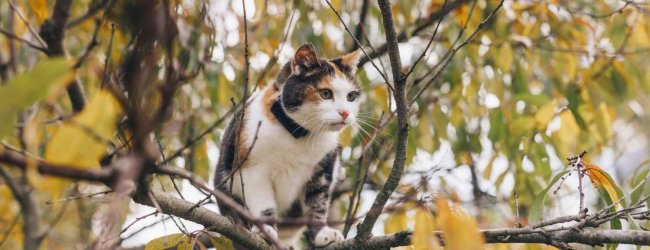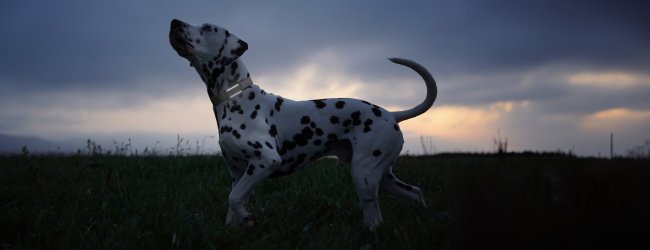 Approved by Dr. Dwight Alleyne, DVM
Approved by Dr. Dwight Alleyne, DVM Which Plants Are Poisonous To Cats?
Think your houseplants are cat-friendly? Think again. Since many common plants can actually be poisonous to your feline friend, keep your cat away from any plant you're not sure about. Read on to learn more about the most common toxic plants for cats.

Who doesn’t enjoy colorful garden flowers or lovely indoor house plants? But beware, some of these beautiful plants can be poisonous to your cat and cause serious illness. Learn to recognize the most common toxic plants for cats and keep them out of your indoor and outdoor cat spaces.

Find out where your cat spends their time.
Read more- Plants and your cat
- Which parts of the plant are toxic to cats?
- Which plants are toxic to cats?
- Other common house plants that are poisonous to cats
- How can I avoid toxic plants?
- Can floral bouquets contain poisonous plants?
- What should I do if my cat eats a poisonous plant?
- What are the signs of plant poisoning in my cat?
- Is fresh-cut flower food harmful to cats?
- Plant safety in cat homes
- Keeping your cat safe in the garden
- Is it safe for cats to eat grass?
- Your cat’s safety is number one
Plants and your cat
You would never knowingly harm your little furball. But dangerous toxins could be lurking in the foliage and flowers of your house and garden plants. Each year, the ASPCA’s Animal Poison Control Center receives thousands of calls when cats eat poisonous plants.
Cats are curious about their environment, and may chew on or rub against plants just to see what they are. Check your indoor and outdoor plants for little bite marks or other evidence of your cat gnawing on the leaves or blossoms. If you think your cat may have eaten part of the plant, check your kitty for symptoms such as drooling, vomiting, or diarrhea. Next, confirm the identity of the plant they have eaten. If the plant is listed as poisonous to cats, contact your veterinarian immediately.
The toxins in plants can cause a wide range of problems, from mild to severe. Your cat may simply vomit, or could experience far more serious outcomes including seizures or coma, depending on the type and amount of poisonous plant consumed.
Which parts of the plant are toxic to cats?
The toxicity of plants can vary greatly, depending on the poisonous substances within the plant. In some cases, all parts of the plant are toxic, including the leaves, stem, petals, seeds, pollen, and the bulb. In other plants, only certain parts are dangerous for your cat to consume.
Which plants are toxic to cats?
Lilies (all varieties)
All lilies including Easter lilies, tiger lilies, and daylilies are extremely toxic to cats, causing kidney failure or death if just a tiny amount of the plant is ingested. Even if your cat does not eat the flowers, stems, or leaves, rubbing against the flowers can cause pollen to stick to your cat’s fur. If you cat licks the pollen from their fur, they can become dangerously ill. Drinking water from a vase that contains cut lilies can also be lethal to cats. Cat parents should never keep lilies in their home or garden.
A cat that consumes any part of a lily should get immediate medical attention from your veterinarian or an emergency vet clinic. Don’t delay this important action.
You might be surprised to learn that tulips, hyacinth, autumn crocus (Colchium autumnale), garlic, and onions are members of the lily family and are just as toxic as other lilies. The same cautions apply to these plants as with all other lilies.
Oleander
Native to warm climates, oleander, also known as nerium oleander, is a popular shrub with attractive flowers. All parts of the oleander plant are toxic – even the water in the vase that holds cut oleander flowers can cause harm if swallowed. If a cat eats oleander, they can experience drooling, vomiting, diarrhea, tremors, and fatal heart abnormalities. Do not bring oleander flowers into your home if you have a cat.
Amaryllis
These lovely flowers are often given as gifts around the December holidays. All parts of the amaryllis are a threat to cats and dogs, too. Cats that ingest amaryllis may experience vomiting, abdominal pain, tremors, or excessive drooling.
Daffodils
These springtime favorites are common in most northern and midwestern gardens. Daffodils and their relatives in the narcissus family contain toxins in all parts of the plant. The bulb is the most toxic part.
The toxin in these plants is called lycorine and it can cause drooling, vomiting, and abdominal pain. In extreme cases, the toxin can induce heart problems, a drop in blood pressure, difficulty breathing, and convulsions.

Track your cat wherever they go
See where they are in real-time, no matter how far they roam. Discover their territory. Get alerted if they go too far. Track activity, sleep, and receive health alerts if your cat’s activity changes. Keep your feline friend healthy and safe.
Azaleas & Rhododendrons
There are more than 1,000 species of flowering shrubs and trees that belong to the azalea and rhododendron family. Some are more toxic than others, but all parts of the plants contain some toxins. If these plants are in your yard, don’t allow your outdoor cat to come into contact with them, and do not bring cuttings into the house. The toxins in these plants can cause tremors, seizures, coma, or even death.
Sago palm
Native to tropical climates, many types of palms are commonly kept as house plants, and the sago palm (Cycas revoluta) is a popular one. All parts of the sago palm are toxic to cats, with the seeds containing high amounts of cycasin, which can cause severe liver damage. If you believe your cat has eaten part of a sago palm, get them to the vet immediately.
Jade
Jade plants are a risk for your furry friend. Even tiny amounts of jade plant eaten by your cat can cause life-threatening symptoms. It’s best to keep jade plants out of your home.
Poinsettia
Popular during the holidays, poinsettias pose a serious hazard if your cat eats them. If you receive a poinsettia as a holiday gift, place it in a spot where the cat cannot get to it. Even better, take it to work and bring some cheer to the office.
Aloe vera
Known for its healing properties such as alleviating sunburn pain and soothing wounds, aloe vera is not healthy for your cat. Keep this toxic house plant out of your home.
Other common house plants that are poisonous to cats
- Peace lilies are dangerous for cats because they contain insoluble calcium oxalates. These substances can cause kidney failure in cats if eaten.
- Devil’s ivy (Epipremnum aureum), also known as pothos, contains insoluble calcium oxalates that irritate the mouth, cause excessive drooling, vomiting, and difficulty swallowing.
- Dumb cane, also called diffenbachia, is another common yet toxic house plant.
- Snake plant (Sansevaria) is popular because it’s almost impossible to kill. However, it can be toxic to your cat if ingested, causing nausea and vomiting.
- English ivy (Hedera helix) is a very common outdoor garden ground cover in temperate climates. The foliage is more toxic than the berries. Your cat may experience gastrointestinal symptoms such as vomiting and diarrhea if English ivy is eaten or chewed on.
How can I avoid toxic plants?
As a cat lover, you want to do all you can to protect your furry friend. That’s why it’s important to ensure that no poisonous plants enter your home or grow in your garden. The best way to do this is to know what type of plants you have. Scientific names are helpful, because they are used consistently by everyone, as opposed to common names, which can vary by region. Once you have the scientific name of the plant, check it against the ASPCA’s Toxic and Non-Toxic Plant List for Cats to make sure it is safe and not poisonous.
Do your research
Make sure you know what types of houseplants are in your home. If any of them are even the tiniest bit poisonous to cats, remove them from your home right away.
If you don’t know what type of plant you have, check the care tag that may be tucked into the soil. Look for the common name and the scientific name on the tag. These are the key to understanding what type of plant you have.
If there is no ID tag in the pot, try using an app that identifies plants. Snap a photo of the plant’s leaves, stems, and flowers and the app will suggest an ID for the plant. Cross check the suggested ID with a list of plants poisonous to cats.
Can floral bouquets contain poisonous plants?
Everyone, including your cat, gets excited by a surprise delivery of fresh-cut flowers. Before you place the bouquet in a vase, try to identify the flowers. Many arrangements contain lilies, which are toxic to cats. If you aren’t sure what types of flowers are in the bouquet, contact the florist who delivered them. Jot down the names of the flowers and check them against the ASPCA’s Toxic and Non-Toxic Plant List for Cats. To be safe, keep the bouquet where kitty cannot reach it.
What should I do if my cat eats a poisonous plant?
If you suspect that your cat ingested a poisonous plant, take immediate action. Call your veterinarian (or your local emergency veterinary clinic if it happens after hours). Try to identify the plant that was eaten, or bring a sample of it with you to the veterinarian’s office. Or, call the ASPCA Animal Poison Control Center at 888-426-4435 or the Pet Poison Helpline at 855-764-7661 (consultation fees may apply).
What are the signs of plant poisoning in my cat?
If your cat ate a poisonous plant, they may experience some or all of the symptoms below:
- Drooling
- Vomiting
- Diarrhea
- Seizures
- Tremors
- Breathing difficulty
- Convulsions
- Coma
First things first, check your houseplants to see if they have been chewed on. If you find evidence that a plant has been chewed on, note the type of plant and contact your veterinarian immediately.
Is fresh-cut flower food harmful to cats?
The packets that come with fresh-cut flowers contain sugar, citric acid, and a small amount of bleach to reduce bacterial growth in the water. If your kitty drinks some of the treated water from a vase, they might get a tummy ache, but that’s all. If you’re worried about your cat drinking this treated water, just use plain water and change it often to keep your flowers fresh.
Plant safety in cat homes
If having indoor plants is important to you, choose plants that are safe and non-toxic to your pets. Check the ASPCA’s Toxic and Non-Toxic Plant List for Cats to make sure you choose pet-safe plants.
Place plants where your cat cannot reach them. Cats can reach countertops and window ledges, so these locations are not ideal.
Hanging planters are a good option for indoor plants, because they can be hung high enough that your cat cannot reach them. Attractive and cat-safe foliage ideas for hanging planters include spider plants and many types of ferns.
If you can’t find a safe spot for house plants, try artificial plants. Some look very life-like and of course they require no care, except for occasional dusting.
Keeping your cat safe in the garden
Protecting your cat outdoors is more challenging than indoors, because outdoor cats often roam onto neighboring properties. In your own garden, avoid all plants known to be toxic to cats such as daylilies, Asiatic lilies, and tiger lilies. Be mindful that in your vegetable garden, tomato plants – like all members of the nightshade family – contain solanine which can cause severe gastronomic upset and a slowed heart rate. If you have tomato plants and your cat roams outdoors, consider fencing that section of your garden. Of course, some plants like kale are safe for cats.
A catio might be a good option for your indoor/outdoor cat. Catios are like mini screened-in porches that provide access to the outdoors but keep your cat safe from toxic or poisonous plants, and other hazards.
Is it safe for cats to eat grass?
Most cats eat grass occasionally, and this is perfectly safe. Cats are meat-eaters, but grass can act as a laxative or induce vomiting, which may help rid the body of indigestible material. Grass contains folic acid, a vitamin that aids in the production of hemoglobin in the blood. Avoid allowing your cat to eat lawn grass that has just been treated with chemicals.
Find out: Why Do Cats Eat Grass And How Does It Affect Them?
Your cat’s safety is number one
Here’s an easy guideline to follow for keeping your cat safe from toxic plants: don’t allow any plants in your home or garden that you cannot identify. Your pet relies on you to keep them safe and healthy, so be informed and play it safe.



